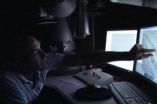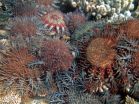(Press-News.org) Scientists at the U.S. Department of Energy's Ames Laboratory have discovered the underlying order in metallic glasses, which may hold the key to the ability to create new high-tech alloys with specific properties.
Glass materials may have a far less randomly arranged structure than formerly thought.
Over the years, the ideas of how metallic glasses form have been evolving, from just a random packing, to very small ordered clusters, to realizing that longer range chemical and topological order exists.
But by studying the structure of a metallic glass alloy formed at varying cooling rates, Matthew Kramer and his team of fellow scientists at the Ames Laboratory have been able to show there is some organization to these structures. These findings were recently published in Scientific Reports, and in a second paper in Physical Review Letters with Paul Voyles' team from University of Madison, Wisc.
"This has been one of those burning questions in material science for a while, how to describe these disordered systems. Our studies are showing this underlying structure. It's diffuse, but it's there. It's been suspected for a long time and even the general structures have been postulated, but to what degree and how to quantify them, that has been the trick," Kramer said.
Kramer's team of scientists used melt spinning to form the alloy samples, a technique that supercools liquids by ejecting it in a stream onto a rapidly spinning copper wheel. These high cooling rates allows the liquid to form a non-crystalline alloy, or metallic glass.
"It's not only the chemistry of that metal that's important. In many cases, how you get it to the solid state, how it solidifies is also a critical factor," said Kramer.
Data was gathered using a high energy X-ray beam at the Advanced Photon Source at Argonne National Laboratory, atom probe chemical analysis, and computational modeling.
The researchers found there are local configurations of the atoms that tend toward a more ordered structure compared to looking at the whole structure. Kramer compared it to design elements in a complex wallpaper style.
"You'll see a little individual design in that wallpaper, and it has a bit of intricacy. That smaller, complex design, you'll see it repeated throughout the wallpaper. In crystallography we call that a motif. A crystalline solid has those motifs in a very ordered array. In the liquid structure, these motifs are still present, but are shuffled around a bit. They're not marching in rows anymore."
Kramer said in liquids these motifs, while not well organized in repeating patterns like crystalline structures, do tend to fall into discrete distances from each other within a certain range.
Not only that, they begin to organize themselves into interconnected networks, similar to the polymeric chains seen in silicate glass and polymers.
"It's these interconnected networks and the degree to which they develop, which probably controls the ability to go from a liquid state to a glassy state with a metal," said Kramer.
Understanding exactly how these metallic glasses form is the key to being able to manipulate their structure for development of new alloys.
"Developing new materials has largely been an Edisonian process. People guess at some interesting alloy compositions, they do some sort of casting, and they look and see what they get. We're trying to get at the challenge in looking for new materials in a different way," Kramer explained. "What might the arrangement of atoms need to be in order to provide the properties we want? Can you actually in fact create these novel structures? By understanding these fundamental building blocks and arranging them in new ways, can we create materials with new or different properties? These are the questions we want to answer."
INFORMATION:
The research is supported by the U.S. Department of Energy Office of Science through the Ames Laboratory.
The Ames Laboratory is a U.S. Department of Energy Office of Science national laboratory operated by Iowa State University. The Ames Laboratory creates innovative materials, technologies and energy solutions. We use our expertise, unique capabilities and interdisciplinary collaborations to solve global problems.
DOE's Office of Science is the single largest supporter of basic research in the physical sciences in the United States, and is working to address some of the most pressing challenges of our time. For more information, please visit science.energy.gov.
Ames Laboratory finds ordered atoms in glass materials
2012-10-02
ELSE PRESS RELEASES FROM THIS DATE:
Use of EHR associated with improvements in outcomes for patients with diabetes
2012-10-02
OAKLAND, Calif., October 1, 2012 — Use of electronic health records was associated with improved drug-treatment intensification, monitoring, and risk-factor control among patients with diabetes, according to a new Kaiser Permanente study.
In the study, which appears in the current issue of Annals of Internal Medicine, researchers also noted greater improvements among patients with poorer control of their diabetes and lipids. The findings provide an important contribution to the evidence base by demonstrating that, for the first time in a large population, EHRs help clinicians ...
Study examines safety of quadrivalent HPV vaccine given to females
2012-10-02
CHICAGO – A study of girls and young women in California suggests that the quadrivalent human papillomavirus vaccine (HPV4) appeared to be associated with syncope (fainting) on the day of vaccination and skin infections in the two weeks after vaccination, according to a report published Online First by Archives of Pediatrics & Adolescent Medicine, a JAMA Network publication.
Human papillomavirus (HPV) is a family of small DNA viruses and infections with this viral family are the most commonly detected sexually transmitted infections in women. While most of these infections ...
Psychiatric disorders persist after youths leave detention
2012-10-02
CHICAGO --- It was a study everyone thought couldn't be done -- tracking, locating and interviewing nearly 2,000 youths up to five years after they were released from juvenile detention in Chicago to assess their mental health.
But a team of intrepid Northwestern Medicine researchers found the young men and women and traveled anywhere necessary to interview them. Many were interviewed after they returned home. Others, however, were interviewed in less conventional locations -- a dancer on a break from her job in a nightclub, a woman in her boyfriend's garbage truck or ...
Study suggests high use of medicare skilled nursing benefit at end of life
2012-10-02
CHICAGO – Almost one-third of older adults received care in a skilled nursing facility in the last six months of life under the Medicare posthospitalization benefit, according to a report published Online First by Archives of Internal Medicine, a JAMA Network publication.
While most Medicare beneficiaries enroll in skilled nursing facility (SNF) care for rehabilitation or life-prolonging care, experience suggests that some dying patients are discharged to a SNF for end-of-life care. Switching patients from Medicare coverage under the SNF benefit to the hospice benefit ...
Psychiatric disorders may persist in some young people after detention
2012-10-02
CHICAGO – A study of juveniles detained in Chicago suggests that more than 45 percent of males and nearly 30 percent of females had one or more psychiatric disorders with associated impairment five years after detention, according to a report published in the October issue of Archives of General Psychiatry, a JAMA Network publication.
Psychiatric disorders are prevalent among incarcerated juveniles. The disorders are likely to persist as the juveniles grow to be young adults because risk factors for psychiatric disorders are common among delinquent youth, including maltreatment, ...
Auto experts recognize cars like most people recognize faces
2012-10-02
When people – and monkeys – look at faces, a special part of their brain that is about the size of a blueberry "lights up." Now, the most detailed brain-mapping study of the area yet conducted has confirmed that it isn't limited to processing faces, as some experts have maintained, but instead serves as a general center of expertise for visual recognition.
Neuroscientists previously established that this region, which is called the fusiform face area (FFA) and is located in the temporal lobe, is responsible for a particularly effective form of visual recognition. But ...
Study affirms safety of HPV4 vaccine for adolescents and young women in routine clinical care
2012-10-02
OAKLAND, Calif. — A study of almost 200,000 young females who received the quadrivalent human papilloma virus (HPV4) vaccine found that immunization was associated only with same-day syncope (fainting) and skin infections in the two weeks after vaccination. These findings support the general safety of routine vaccination with HPV4 in a clinical care setting to prevent cervical and other genital and reproductive cancers.
The association between HPV4 and syncope was not unexpected, the researchers noted, because injections in general are known to have a correlation to fainting, ...
Restricting nuclear power has little effect on the cost of climate policies
2012-10-02
"Questions have been raised if restricting nuclear energy – an option considered by some countries after the accident in Fukushima, Japan – combined with climate policies might get extremely expensive. Our study is a first assessment of the consequences of a broad range of combinations of climate and nuclear policies," lead author Nico Bauer says. Restrictions on nuclear power could be political decisions, but also regulations imposed by safety authorities. Power generation capacities would have to be replaced, but fossil fuels would become costly due to a price on CO2 ...
The Great Barrier Reef has lost half of its coral in the last 27 years
2012-10-02
The Great Barrier Reef has lost half its coral cover in the last 27 years. The loss was due to storm damage (48%), crown of thorns starfish (42%), and bleaching (10%) according to a new study published in the Proceedings of the National Academy of Sciences today by researchers from the Australian Institute of Marine Science (AIMS) in Townsville.
"We can't stop the storms but, perhaps we can stop the starfish. If we can, then the Reef will have more opportunity to adapt to the challenges of rising sea temperatures and ocean acidification, says John Gunn, CEO of AIMS.
...
Tree rings go with the flow of the Amazon
2012-10-02
University of Leeds-led research has used tree rings from eight cedar trees in Bolivia to unlock a 100-year history of rainfall across the Amazon basin, which contains the world's largest river system.
The new study shows that the rings in lowland tropical cedar trees provide a natural archive of data closely related to historic rainfall.
Researchers measured the amounts of two different oxygen isotopes trapped in the wood's rings: oxygen-16 and the heavier oxygen-18. By looking at the varying amounts of the two isotopes, they could see how the pattern of rainfall ...

